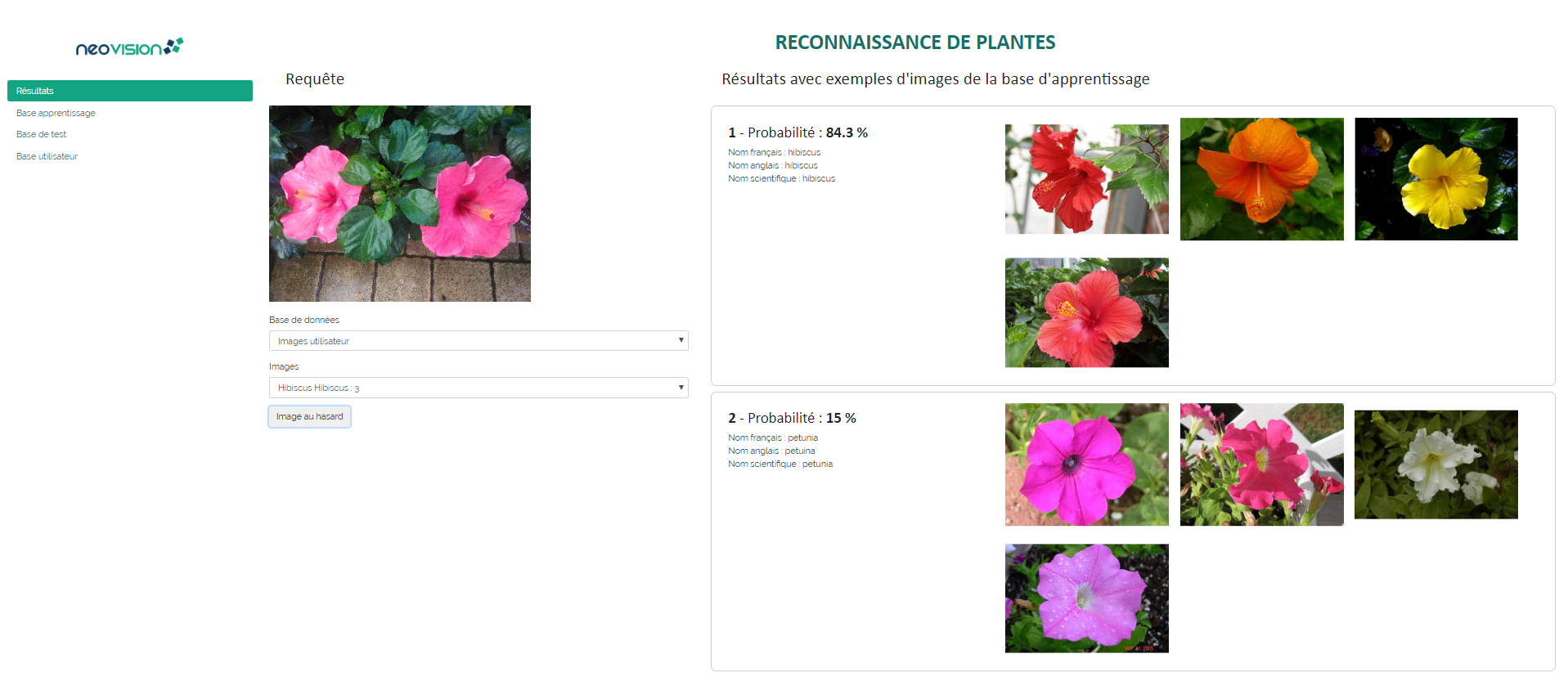FLOWER RECOGNITION
ISSUE
How many plants are bought and die as a result of poor maintenance? Too much watering, insufficient exposure to light, the reasons are many… Botanic, a company that sells plants, wondered how to bring the right advice directly to its customers, without them having to go to the store. The aim was to help them know exactly what species of plant they owned.
SOLUTION PROVIDED
To solve the problem of identification, Neovision designed and developed an artificial intelligence solution capable of recognizing the species of flowers marketed by the company. This technology makes it possible to recognize a flower from a photo taken with a smartphone.
CUSTOMER BENEFIT
With this technology, Botanic could integrate a new functionality to its application and thus give relevant advice to its customers. Customers no longer need to go to the store, giving more time to salespeople who will be able to improve and speed up plant identification. In addition, customers can properly care for their plants and salespeople can focus on their tasks.
REALIZATION
BOTANIC is a company with a network of garden centers that offers garden and more broadly nature-related products to its customers. In addition to its stores, the company has a website and a mobile application available on the App Store and Google play. Botanic is committed to the well-being of living beings as demonstrated by its ecological products and solutions. The company wishes to make it easier for customers to take care of the plants it sells by providing advice to its customers. The application seems a good way to do so, but there is still one problem though: plant identification. This is why Botanic was interested in plant recognition to bring advice and service to its customers. However, before working on the creation of its own database, Botanic wanted to test the technology and see if it was reliable.
The recognition of flowers and plants, an application of AI that many imagined but was not feasible a few years ago. Indeed, the flowers and leaves of a plant are subject to deformation and AI had difficulty recognizing anything that was not rigid enough. However, advances in Deep Learning and the creation of massive public databases make it possible to recognize increasingly “soft” objects.
Subsequently, Neovision got in touch with the LIRIS laboratory to speak with flower experts. This collaboration allowed Neovision to benefit from feedback on the acquisition and labeling of flower images. Indeed, a researcher had carried out a similar work on rose varieties. As the talks went on, we realized our choice was confirmed and that the Oxford Flowers dataset really was the most relevant database.
The database was then divided into a learning game and a test game. Neovision then trained a state-of-the-art Deep Learning classification algorithm.
Finally, the results were conclusive since the model classifies images with 96 to 99% accuracy. Indeed, the model can give a single result or a list of 5 results. On the first modality, the precision reached 96% when it was almost perfect with the top 5 (99%).
Finally, after conducting quantitative and qualitative analyses, Neovision made the algorithm accessible in the form of a web demonstrator. Botanic had access to this new technology, the first results of which were very interesting. They now pave the way for the creation of a database specific to Botanic thanks to the development of an acquisition protocol (e.g. the flowers must be centered on the image, in close-up with good contrast). Neovision achieved its objective.
ASSOCIATED TECHNOLOGIES AND EXPERTISE
COMPUTER VISION, DEEP LEARNING
Date
21 October 2020
Category
Computer Vision, Deep Learning, Retail







